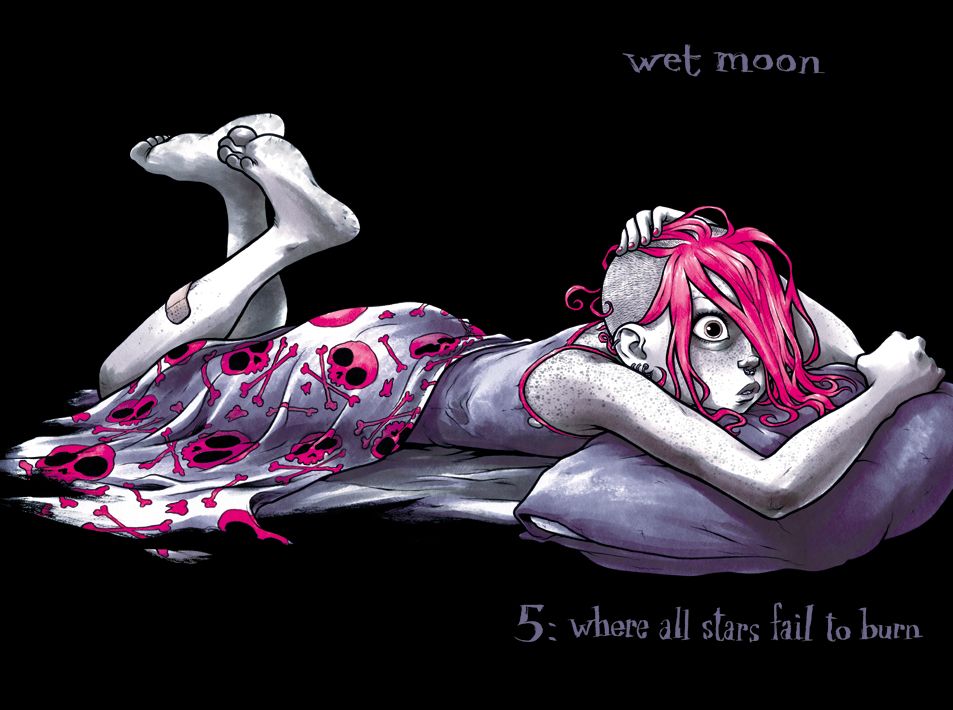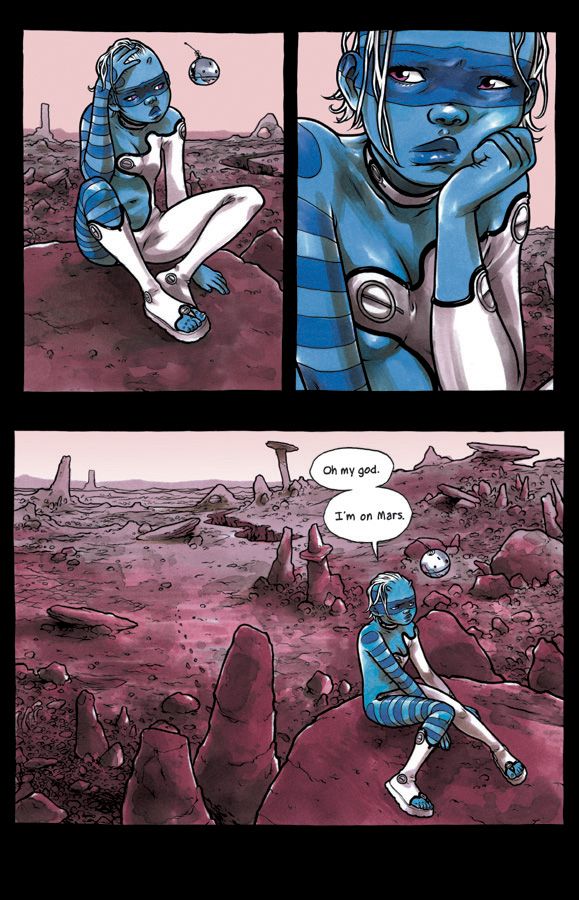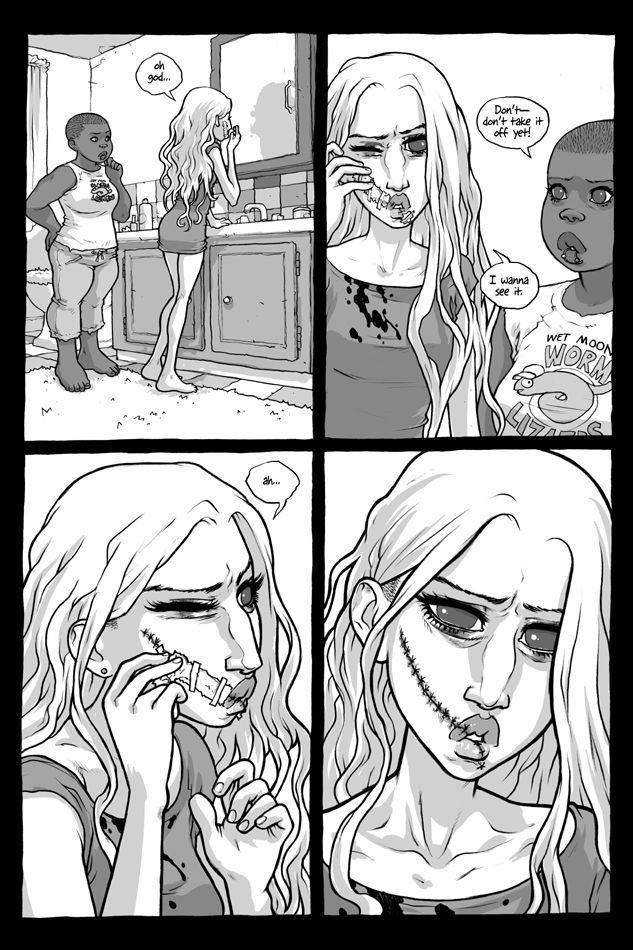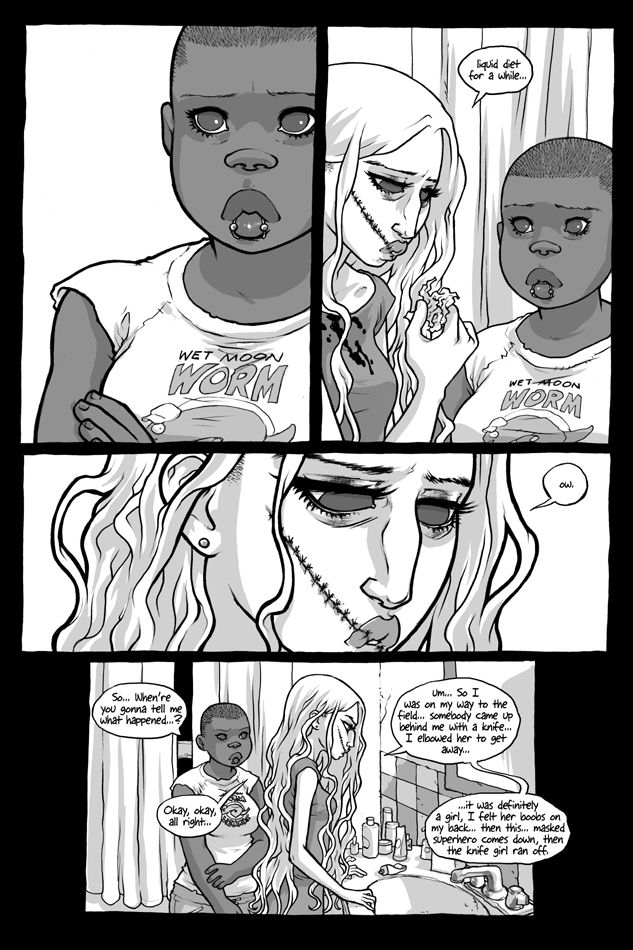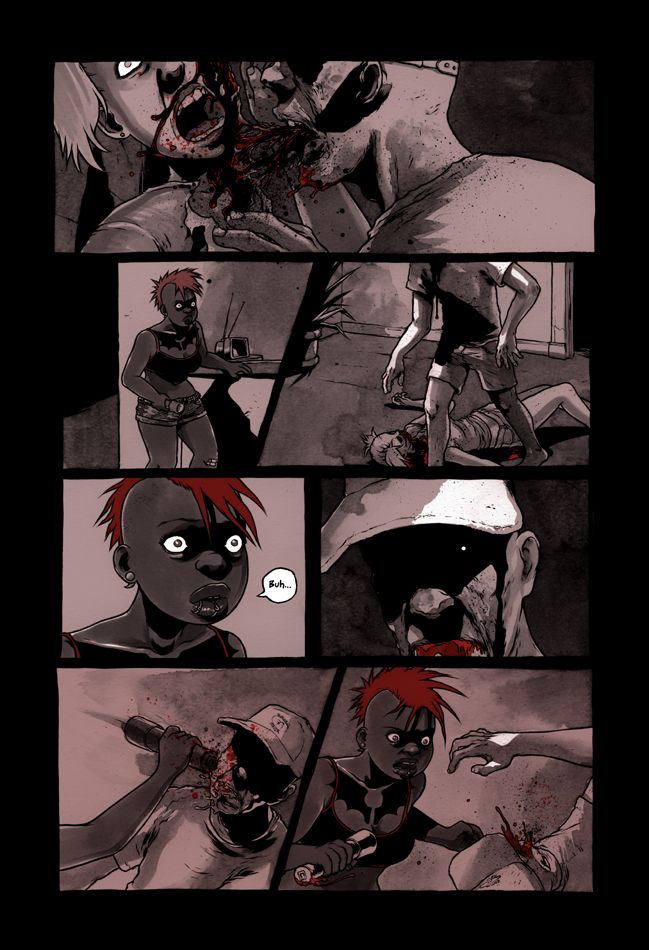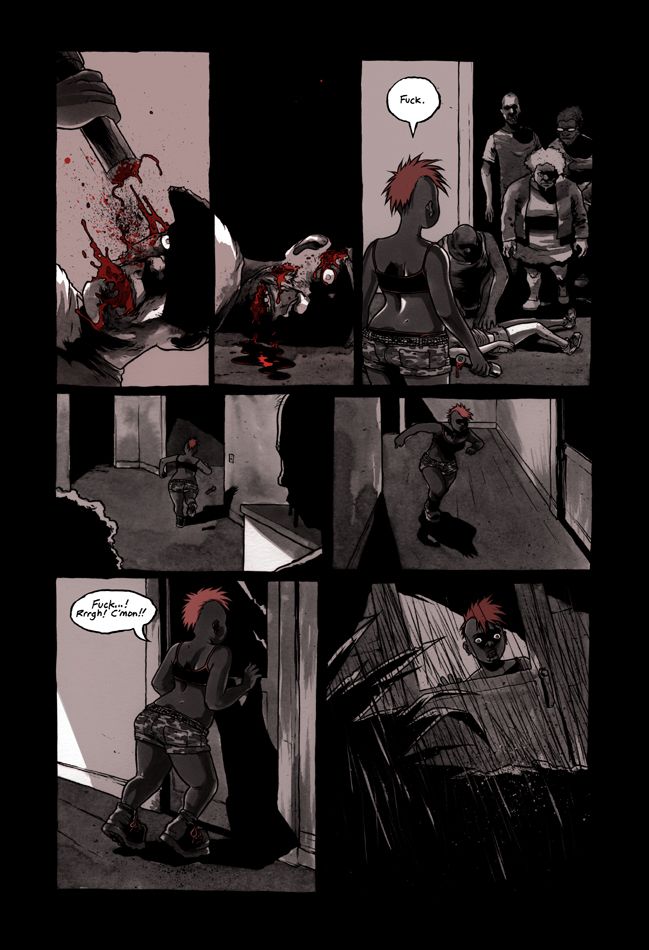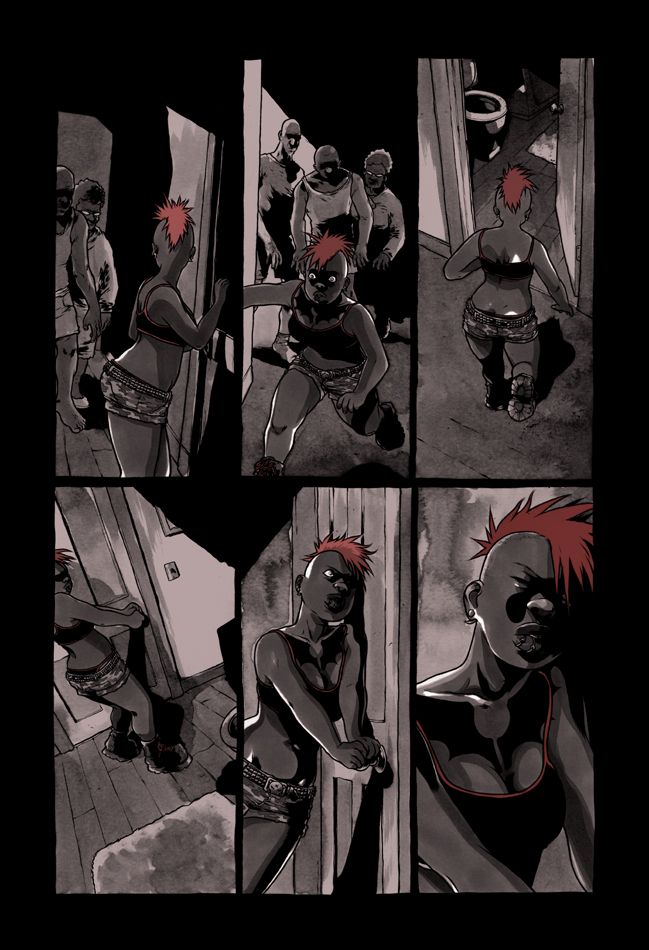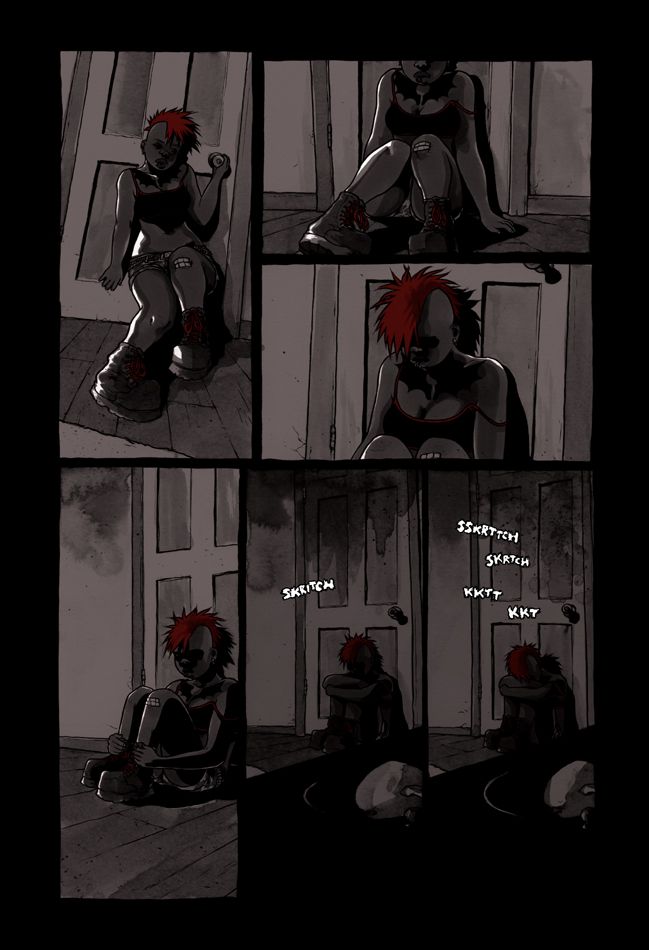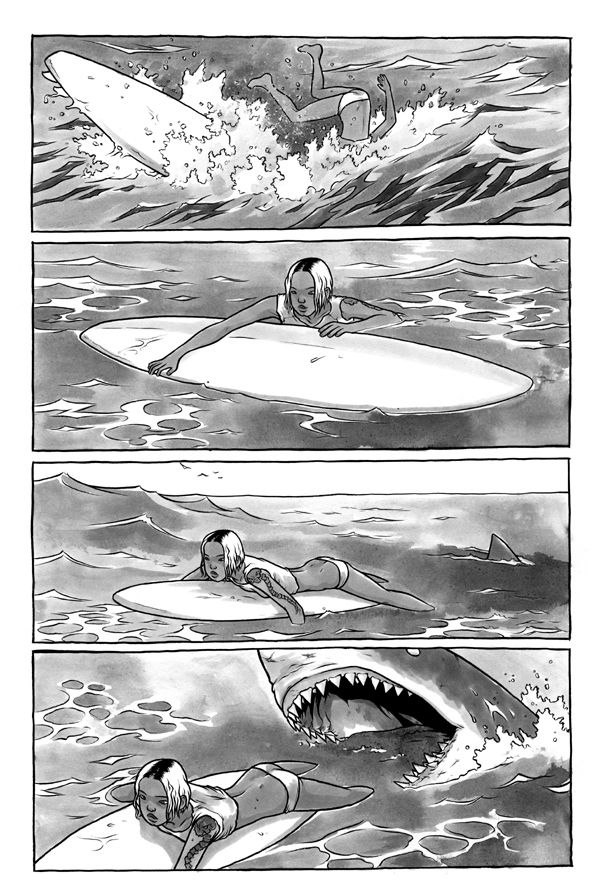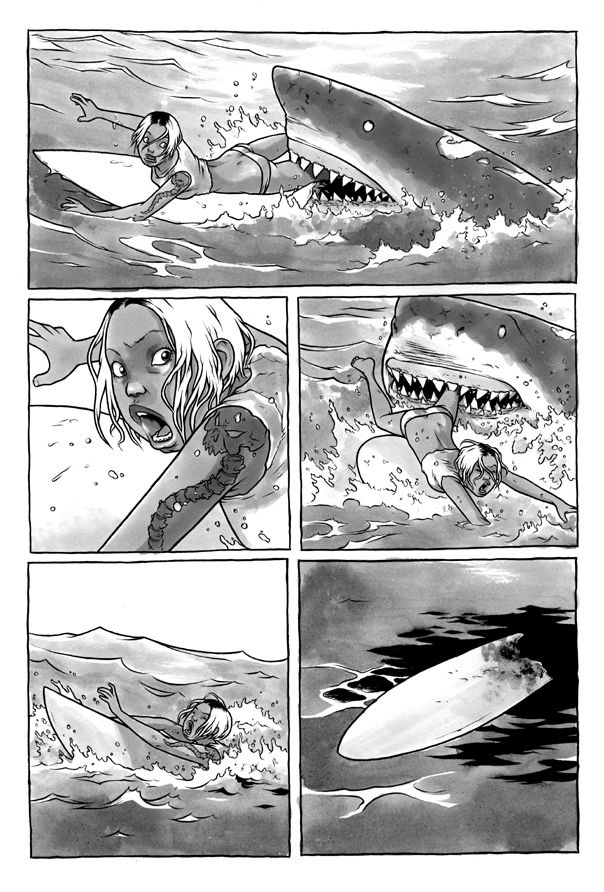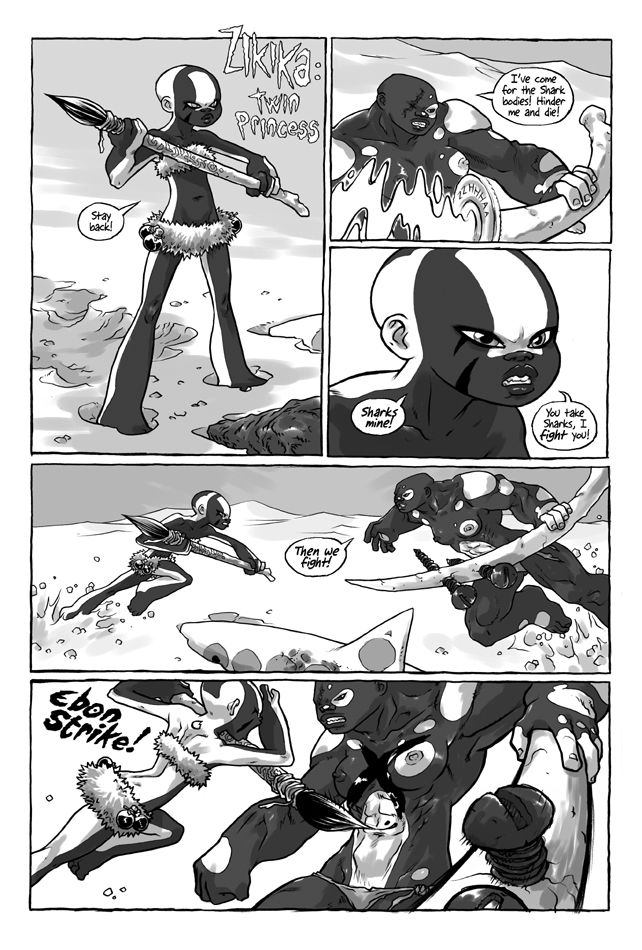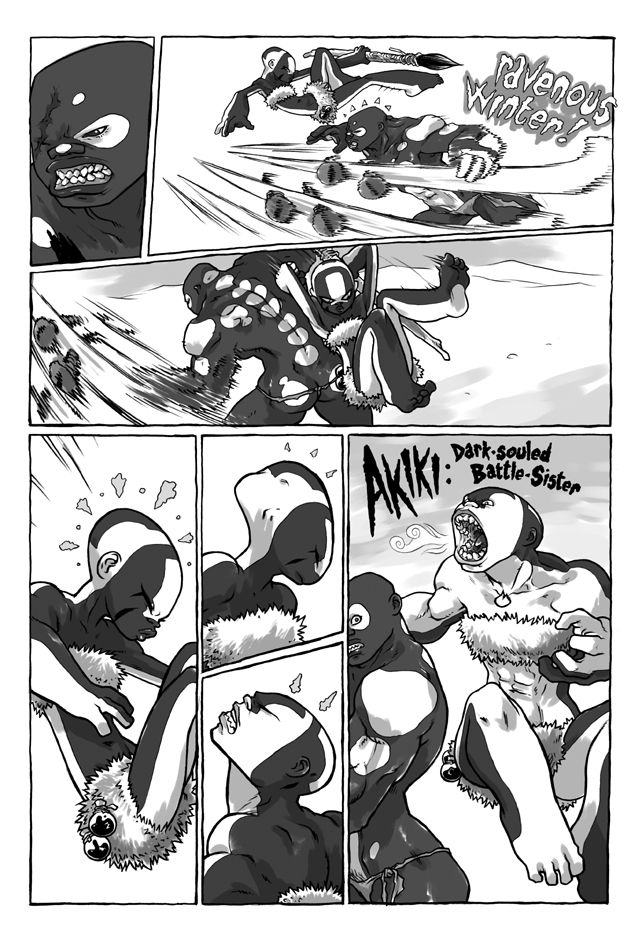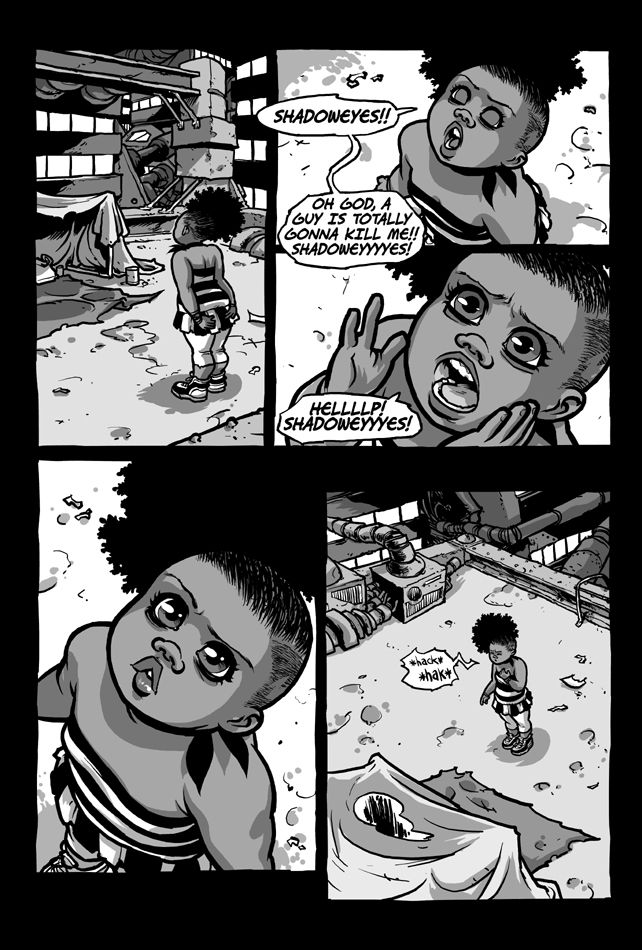Well, this is a special week on She Has No Head! dear readers, as you are getting not one, but two columns this week (try to contain your enthusiasm). Today, a spotlight on the work of creator Ross Campbell, and tomorrow, a conversational interview with Campbell that discusses not only his past work, but his exciting upcoming superhero book from Slave Labor Graphics, Shadoweyes. Additionally, in a few weeks She Has No Head! will have an advance review of Shadoweyes and an exclusive excerpt from the book. But for now…let’s take a look at the impressive and surprisingly prolific career of young creator, writer, and artist Ross Campbell. A word of warning, there are some possibly NSFW images below the cut, and definitely some gore, if you're squeamish.
Ross Campbell has being doing his own thing in independent comics almost from the very beginning, completing the first of volume of his Wet Moon series in 2004, only a year or so after making a splash as an artist phenom on Antony Johnston’s Spooked and Jen Van Meter’s Too Much Hopeless Savages.
Since Wet Moon debuted in January 2005, Campbell has been a machine, doing four additional Wet Moon volumes with Oni; the zombie book The Abandoned with Tokyopop; Water Baby for DC’s Minx line; his self-published Mountain Girl series; a short story for the Meathaus: SOS anthology; art for a Bill Willingham penned short “The Hollows” for Vertigo’s House of Mystery#1; some Hack/Slash; some TMNT work; and then of course there is his forthcoming superhero epic Shadoweyes for SLG, releasing in June.
Wet Moon, the opus Campbell is likely most well known for (and for which Volume 2 was nominated for a Special Recognition Eisner - in concert with The Abandoned - in 2007), is currently on Volume 5 and stars a large cast of characters – mostly teens and college co-eds – living in the fictional southern town of Wet Moon. Wet Moon is known in part for Campbell’s goth and punk sensibilities - mixing clothing, piercings, tattoos, and hair styles with equal distribution and creating a rich visual tapestry. Wet Moon is a slice of life character story with a dark horror element running throughout it, not unlike the way horror realistically runs through most people’s lives – touching it lightly and sometimes entirely without our knowledge. The strength of Wet Moon, to me, beyond Campbell’s stunning visuals, is the strong character work and the realism with which he portrays said characters both as a writer and artist. However, the horror element is an excellent hook that keeps the book from feeling aimless, as slice of life stories sometimes can feel. Just as you start to forget that characters you love are potentially in jeopardy, Campbell manages to remind you – and never gently.
Here’s a short excerpt from Wet Moon Volume 5:
The Abandoned, Campbell’s zombie tale, released in 2006, focuses on heroine Rylie and a small band of her friends who realize quite suddenly (and violently) that most of their town has been turned into zombies. The young heroes fight for their survival in true George Romero inspired fashion - violently and passionately and with not always happy results. The art is both beautiful and intensely gory, and certainly not for the faint of heart. The use of red tones as the single color throughout the book is rather inspired and takes the entire piece up a notch artistically. The Abandoned is another great and realistic character piece that also manages to work in some nice allegorical themes such as the disenfranchisement of the youth. But if you’re not looking for layers in your zombie horror, don’t worry, as there is certainly plenty of more direct fun to be had as well. The only drawback to The Abandoned, far and away one of the best zombie graphic novels I’ve read, is the Tokyopop size. It’s a little small to really do Campbell’s artwork justice and for my tastes the word balloons are a bit on the small size as well.
Here’s an excerpt from The Abandoned:
Water Baby, Campbell’s offering to DC’s now defunct Minx line was far and away my favorite book Minx published, finding an effortlessly edgy teen voice that I felt a lot of the other books aimed for but often missed (at least on the effortless tip). Water Baby is the tale of surfer Brody and how she deals with the loss of her leg after a gruesome shark attack. With the help of her best friend Louisa, Brody tries to cope, but the arrival of her lay about ex-boyfriend Jake doesn’t help and inspires an impromptu road trip where more hi-jinx ensue. The entire book is beautifully illustrated, as all Campbell’s work is, and reads more authentically than most books aimed at teens. Particularly insightful and powerful in Water Baby is Campbell’s handling of Brody’s dreams in the aftermath of the accident. They nice reflect both her way of coping and simultaneously avoiding her trauma and it's a storytelling technique that packs a significant emotional punch for the reader.
Here’s a small excerpt from Water Baby, and there's a large preview at NY Magazine's Vulture Blog here:
Campbell’s self-published Mountain Girl series, which has been delighting his hardcore fans and comic-con goers everywhere for a few years now is the wild tale of Naga, a Humunga Princess. Living in a post-holocaust future, royal offspring of a tribe of mystic cannibal barbarians Naga is originally a warrior on a quest - in and of itself that's maybe not so revolutionary as Naga’s story seems like many warrior tales we see in comics. However Naga is a character unlike any I have ever read before – a giant muscled tattooed shaved headed non-white badass warrior that is quite happy in clothing optional situations - and that devours nearly anything in her path. Naga’s adventures are equally creative as she encounters everything from Beaver Gods and Shark Goddsses to her mythical enemies the Watiko. Campbell draws heavily on mythology from a variety of cultures, mixed in with his own ideas to create the visionary world of Mountain Girl. The best thing about Naga? As a cannibal she becomes stronger by eating any enemies that she defeats – and that’s counter to pretty much every message I’ve ever encountered being relayed to young girls – and certainly one I can get behind!
A couple pages from Mountain Girl #3:
Shadoweyes, Campbell’s first superhero project, is a visual delight judging from the preview pages he has released thus far, and I look forward to the opportunity to do an advance review for the project in the upcoming weeks. Don’t forget to come back to see what I thought and get a look at an exclusive excerpt.
In all of Campbell’s original and varied publications thus far, the one constant in his work is his seeming resistance to depicting his characters – particularly his female characters - with the same old stereotypical comic book look. He’s interested in realism, and when I say realism, I simply mean a wide variety of heights, weights, body types, ethnicities, cultures, sexual orientations and beyond. I find it to be a refreshing (and sadly pretty original to comics) reflection of the real world. The real world does not look just one way, it's filled with variety – certainly more variety than just the supermodel, porn star, or steroid Olympic athlete look we so frequently get handed in comics - and I enjoy seeing that variety in Campbell's books. While his unique artistic choices remain my favorite thing about Campbell’s work, it has made him controversial, at times drawing him nearly as much criticism as praise.
I suspect all sides have a point, and Campbell himself has talked in interviews and on his website about his concern about accidentally adding to the problems of female exploitation rather than combating it – and concern that he has occasionally and inadvertently sexualized or fetishized his characters. But for me, I can’t really see the problems because I’m too busy seeing all the good. Campbell is one of the only well-known artists representing a constant variety of female body types in comics – and like any artist there is a process to figuring out a style that you like and that does everything you need it to (and nothing you don’t want it to). Because Campbell is such an uber-talent, he was recognized and published quite early on in his career which means that a lot of his process went on in front of a public that can be – as we all know – shockingly critical of anything and everything.
I, for one, am glad he went through – and likely will continue to go through - that process. I’d certainly prefer it to seeing the same house style – mostly white girls with perfect Marilyn Monroe proportions - being cranked out right and left like some kind of mannequin factory. Process is good. Process is what moves us forward. And that’s how Campbell’s books always feel to me – forward moving, forward thinking – forward period.
You can find most of Campbell's books either at their original publisher or on Amazon, although The Abandoned is out of print and can be difficult to track down. I got my copy used from Amazon, and it was well worth the slightly over cover price. You can pre-order Shadoweyes from Amazon now.
Campbell has a website where you can follow him for updates, find reviews of his books, and check out additional artwork; but he's perhaps most active on his live journal where he often posts a sketch a day and awesome preview art, and on his Deviantart page, which is full of amazing goodies.

